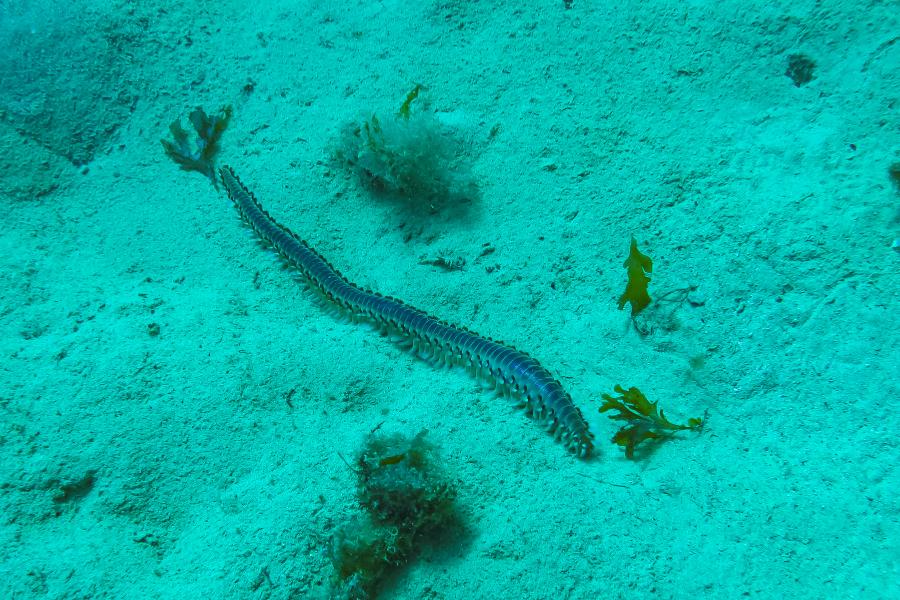One of Earth's most consequential bursts of biodiversity—a 30-million-year period of explosive evolutionary changes spawning innumerable new species—may have the most modest of creatures to thank for this vital stage in life's history: worms.
The digging and burrowing of prehistoric worms and other invertebrates along ocean bottoms sparked a chain of events that released oxygen into the ocean and atmosphere and helped kick-start what is known as the Great Ordovician Biodiversification Event roughly 480 million years ago, according to new findings Johns Hopkins University researchers published in the journal Geochimica et Cosmochimica Acta.
"It's really incredible to think how such small animals could alter the course of evolutionary history in such a profound way," says senior author Maya Gomes, an assistant professor in the [Department of Earth and Planetary Sciences](Department of Earth and Planetary Sciences). "With this work, we'll be able to examine the chemistry of early oceans and reinterpret parts of the geological record."
Conventional wisdom held that as worms and other animals burrowed in the sediment along the floors of ancient oceans, they would have churned up a mineral called pyrite. Pyrite plays a key role in oxygen buildup: As it forms and becomes buried under layers of mud, silt, or sand, oxygen levels rise. When unearthed by the worms, the pyrite would have been exposed to—and destroyed by—oxygen in the water, a process that would ultimately prevent oxygen from accumulating in the atmosphere and ocean. Mixed sediments have been viewed as evidence that oxygen levels were holding steady.
The problem, says Gomes, is that explanation relies on observations from modern marine habitats that already have a lot of oxygen in them. Oceans had much less oxygen at the start of the Paleozoic era than they do today.
To better understand how pyrite behaves in low-oxygen conditions, Gomes and her researchers measured the mineral from nine sites along a Maryland shoreline of the Chesapeake Bay, a body of water that serves as a proxy for early ocean conditions. Sites with even just a few centimeters of sediment mixing held substantially more pyrite than those without mixing and those with deeper mixing.
The new data suggests that a small amount of sediment mixing in water with very low levels of oxygen would have exposed buried pyrite, sulfur, and organic carbon to just enough oxygen to kick-start the formation of more pyrite.
"It's kind of like Goldilocks. The conditions have to be just right," says Kalev Hantsoo, a doctoral candidate at Johns Hopkins and first author on the article. "You have to have a little bit of mixing to bring the oxygen into the sediment, but not so much that the oxygen destroys all the pyrite and there's no net buildup."
The findings challenge previous assumptions that the relationship between pyrite and sediment mixing remained the same across habitats and through time, Gomes says. When oxygen levels were high, pyrite would have been destroyed. But at times when oxygen levels were really low, more pyrite would have been created.
Also see
When the researchers applied this new relationship between pyrite and the depth of sediment mixing to existing models that track oxygen rates over time, they found oxygen levels stayed relatively flat for millions of years and then rose during the Paleozoic era, with a steep rise occurring during the Ordovician period.
Back then, the world would have looked much different than it does today. Sparse patches of green slime or moss-like species may have spread across the land, but most life existed in the oceans. Simple, single-celled algae would have made enough oxygen via photosynthesis to sustain trilobites, clamlike brachiopods, worms, and other life-forms that came into existence during the Cambrian period. As those species proliferated, they scurried around, burrowed, and ultimately churned up sediment on the ocean floor. At the same time, oxygen levels were slowly rising, until the conditions were just right and oxygen levels soared. All of that extra oxygen likely contributed to the Great Ordovician Biodiversification Event, when new species rapidly flourished and spread out from ocean floor and nearshore habitats into the water column and open ocean environments, the researchers say.
"There's always been this question of how oxygen levels relate to the moments in history where evolutionary forces are ramped up and you see a greater diversity of life on the planet," Gomes says. "The new models allow us to revisit other key points in Earth's history."








